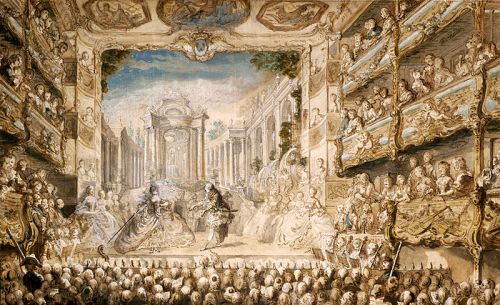
The French Lebanese composer Bechara El-Khoury began his musical training at an early age, studying in Beirut with Agop Arslanian. Celebrated as a child prodigy, he composed around 100 works between 1969–when he was just 12 years old–and 1978. According to El-Khoury, “I began to compose melodies and simple songs when I was around 7 years old. I quickly moved to writing for orchestra, when I was about 12. I composed many pieces when I was young, but my first official work (that appears in my catalogue) was not until 1979, when I arrived in Paris.”
In addition to his musical pursuits, El-Khoury published three collections of poetry between 1971 and 1973, and from 1973 served as capo at the Church of St. Elie in Antelias, near Beirut. In 1979, he moved to Paris, where he refined his skills in composition and orchestration under the guidance of Pierre Petit. He became a French citizen in 1987.
In 1983, the Orchestre Colonne, conducted by Pierre Dervaux, recorded two CDs of Bechara El-Khoury’s music with pianist David Lively. That same year, a televised gala concert featuring El-Khoury’s works—performed with pianist Abdel Rahman El Bacha—was held in celebration of the Khalil Gibran Centenary. In 1985, El-Khoury composed the symphony Les Ruines de Beyrouth, followed in 1996 by a violin sextet commissioned by Shlomo Mintz. He has received numerous honors for his work, including the Prix des Arts et de la Culture from the Lebanese Broadcasting Corporation International (1994), the Prix Rossini from the Académie des Beaux-Arts, Institut de France (2000), and the title of Chevalier of the Ordre National du Cèdre du Liban (2001). In 2003, he was a finalist in the London-based Masterprize composition competition with his orchestral work Les Fleuves engloutis (2001).


In 2006, El-Khoury’s violin concerto Aux frontières de nulle part (2002) received its premiere in Paris, performed by the Orchestre National de France under the baton of Kurt Masur. That same year, the London Symphony Orchestra recorded two of his major orchestral works: Les Fleuves engloutis and New York, Tears and Hope (2005), the latter composed in memory of the victims of the September 11 attacks in New York.
El-Khoury is also an accomplished poet, and he often speaks about the symbiotic relationship between his poetry and music. In an interview, he explains: “With many of my pieces I write a poem linked to it, either before or after. Sometimes the music creates a poem, and sometimes it is created by a poem . . . My poetic inspiration comes largely from the famous Lebanese poet Khalil Gibran and from Nietzsche.” He adds, “Not necessarily all my music is linked to poetry. And even if a piece has some poetic or programmatic inspiration, it’s still music. You can listen to it without having to know the content.” Nature is another key source of inspiration in El-Khoury’s work. For example, his horn concerto The dark mountain was inspired by childhood memories of the Lebanese mountains.
This according to the entry on Bechara El-Khoury in MGG Online.
Below, El-Khoury’s horn concerto in The dark mountain.










